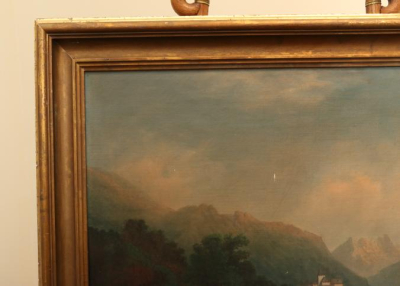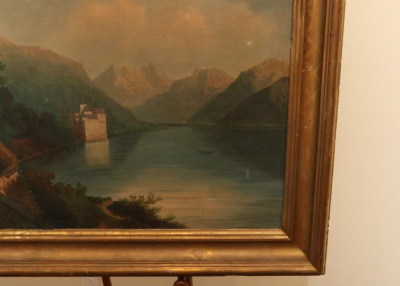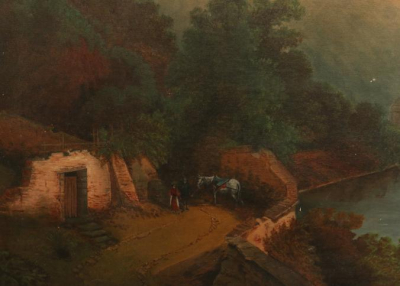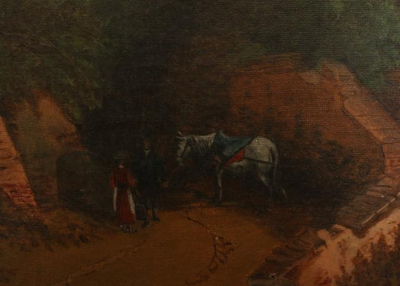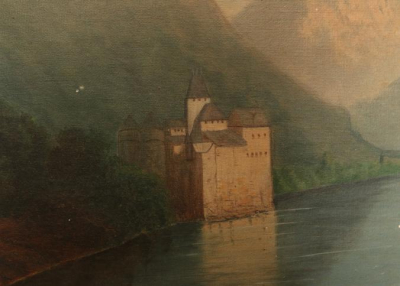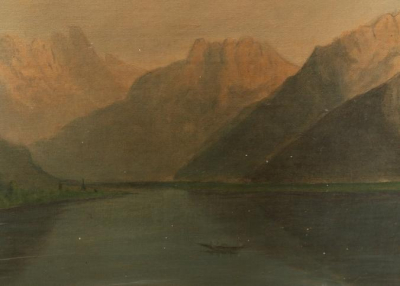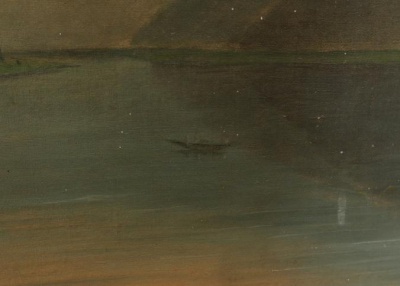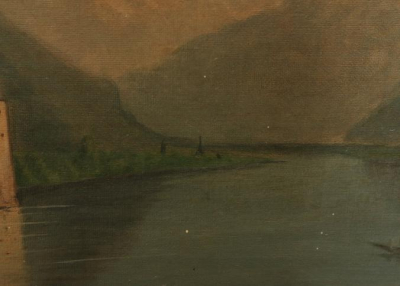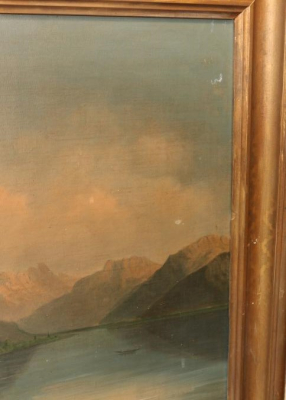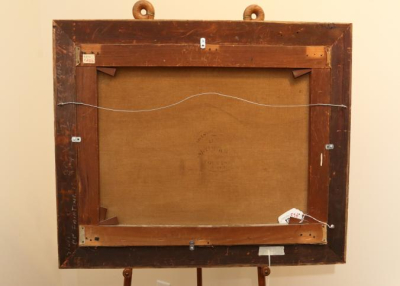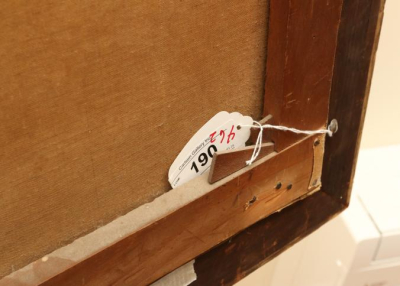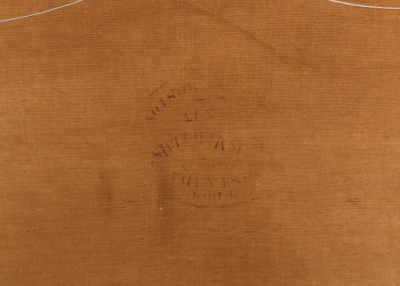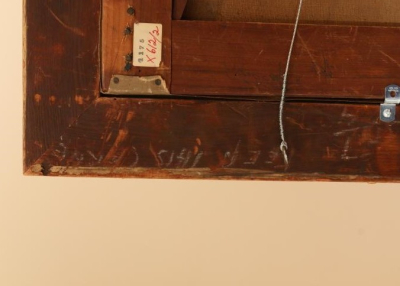Items located in Pleasant Valley, NY. Items include Hudson River School artwork, seascapes and framed lithographs. The Hudson River School of "Nature Painters" were painting from the mid-19ThC to the late 19thC. Although, they were actively painting views all across America, the scenes on the Hudson River are the most sought after. You have a rare opportunity to purchase these great "Views" now in this no-reserve auction. We also encourage you to come see us and preview the auction in-person.
Payment is due by Tuesday, May 23 at 3PM.
Pickup in Pleasant Valley, NY must be completed by Thursday, May 25 at 3PM.
All lots sold as is, where is. There is a 15% Buyers Premium for all lots purchased. Payment methods include cash, PayPal, MC, Visa, Discover or good check. You can make credit card payment online by going to your Member Area and selecting your invoice. To pay by PayPal, send money to info@aarauctions.com.
Payment is due by Tuesday, May 23 at 3PM.
Pickup in Pleasant Valley, NY must be completed by Thursday, May 25 at 3PM.
All lots sold as is, where is. There is a 15% Buyers Premium for all lots purchased. Payment methods include cash, PayPal, MC, Visa, Discover or good check. You can make credit card payment online by going to your Member Area and selecting your invoice. To pay by PayPal, send money to info@aarauctions.com.
Auction Info
Items located in Pleasant Valley, NY. Items include Hudson River School artwork, seascapes and framed lithographs. The Hudson River School of "Nature Painters" were painting from the mid-19ThC to the late 19thC. Although, they were actively painting views all across America, the scenes on the Hudson River are the most sought after. You have a rare opportunity to purchase these great "Views" now in this no-reserve auction. We also encourage you to come see us and preview the auction in-person.
Payment is due by Tuesday, May 23 at 3PM.
Pickup in Pleasant Valley, NY must be completed by Thursday, May 25 at 3PM.
All lots sold as is, where is. There is a 15% Buyers Premium for all lots purchased. Payment methods include cash, PayPal, MC, Visa, Discover or good check. You can make credit card payment online by going to your Member Area and selecting your invoice. To pay by PayPal, send money to info@aarauctions.com.
Payment is due by Tuesday, May 23 at 3PM.
Pickup in Pleasant Valley, NY must be completed by Thursday, May 25 at 3PM.
All lots sold as is, where is. There is a 15% Buyers Premium for all lots purchased. Payment methods include cash, PayPal, MC, Visa, Discover or good check. You can make credit card payment online by going to your Member Area and selecting your invoice. To pay by PayPal, send money to info@aarauctions.com.
Categories:
19thC "Castle Chillon" Lake Geneva in Swiss Alps. American School o/c framed, unsigned. Wikipedia: Chillon began as a Roman outpost, guarding the strategic road through the Alpine passes.[2] The later history of Chillon was influenced by three major periods: the Savoy Period, the Bernese Period, and the Vaudois Period.[3]
Savoy period Edit
Arms of the House of Savoy
The oldest parts of the castle have not been definitively dated, but the first written record of the castle is in 1005.[4] It was built to control the road from Burgundy to the Great Saint Bernard Pass[5] From the mid 12th century, the castle was summer home to the Counts of Savoy, who kept a fleet of ships on Lake Geneva. The castle was greatly expanded in 1248[6] by Peter II.[7]
Chillon as a prison Edit
During the 16th century Wars of Religion, it was used by the dukes of Savoy to house prisoners. Its most famous prisoner was probably François de Bonivard, a Genevois monk, prior of St. Victor in Geneva and politician who was imprisoned there in 1530 for defending his homeland from the dukes of Savoy.[8]
Bernese period Edit
Over his six-year term, de Bonivard paced as far as his chain would allow, and the chain and rut are still visible. He was rescued in 1536 by his countrymen and Bernese, who took the castle by force. The prison was residence for Bernese bailiff until Chillon was converted into a state prison in 1733.[9]
Vaudois period Edit
In 1798, the French-speaking canton of Vaud drove out the German-speaking Bernese authorities and declared the Lemanic Republic. The Vaudois invited in French troops to help them maintain autonomy from the other Swiss. When the French moved in and occupied, Chillon was used as a munitions and weapons depot.[10]
Today Edit
Today, Chillon is currently open to the public for visits and tours. According to the castle website, Chillon is listed as "Switzerland's most visited historic monument".[11] There is a fee for entrance and there are both parking spaces and a bus stop nearby for travel. Inside the castle there are several recreations of the interiors of some of the main rooms including the grand bedroom, hall, and cave stores. Inside the castle itself there are four great halls, three courtyards, and a series of bedrooms open to the public. One of the oldest is the Camera domini, which was a room occupied by the Duke of Savoy - it is decorated with 14th Century medieval murals 20" x 27"
More Details
19thC "Castle Chillon" Lake Geneva in Swiss Alps. American School o/c framed, unsigned. Wikipedia: Chillon began as a Roman outpost, guarding the strategic road through the Alpine passes.[2] The later history of Chillon was influenced by three major periods: the Savoy Period, the Bernese Period, and the Vaudois Period.[3]
Savoy period Edit
Arms of the House of Savoy
The oldest parts of the castle have not been definitively dated, but the first written record of the castle is in 1005.[4] It was built to control the road from Burgundy to the Great Saint Bernard Pass[5] From the mid 12th century, the castle was summer home to the Counts of Savoy, who kept a fleet of ships on Lake Geneva. The castle was greatly expanded in 1248[6] by Peter II.[7]
Chillon as a prison Edit
During the 16th century Wars of Religion, it was used by the dukes of Savoy to house prisoners. Its most famous prisoner was probably François de Bonivard, a Genevois monk, prior of St. Victor in Geneva and politician who was imprisoned there in 1530 for defending his homeland from the dukes of Savoy.[8]
Bernese period Edit
Over his six-year term, de Bonivard paced as far as his chain would allow, and the chain and rut are still visible. He was rescued in 1536 by his countrymen and Bernese, who took the castle by force. The prison was residence for Bernese bailiff until Chillon was converted into a state prison in 1733.[9]
Vaudois period Edit
In 1798, the French-speaking canton of Vaud drove out the German-speaking Bernese authorities and declared the Lemanic Republic. The Vaudois invited in French troops to help them maintain autonomy from the other Swiss. When the French moved in and occupied, Chillon was used as a munitions and weapons depot.[10]
Today Edit
Today, Chillon is currently open to the public for visits and tours. According to the castle website, Chillon is listed as "Switzerland's most visited historic monument".[11] There is a fee for entrance and there are both parking spaces and a bus stop nearby for travel. Inside the castle there are several recreations of the interiors of some of the main rooms including the grand bedroom, hall, and cave stores. Inside the castle itself there are four great halls, three courtyards, and a series of bedrooms open to the public. One of the oldest is the Camera domini, which was a room occupied by the Duke of Savoy - it is decorated with 14th Century medieval murals 20" x 27"
High Bid:
$300.00 – epic
Auction Type: One Lot
Quantity: 1
Bidding has closed on this lot






















